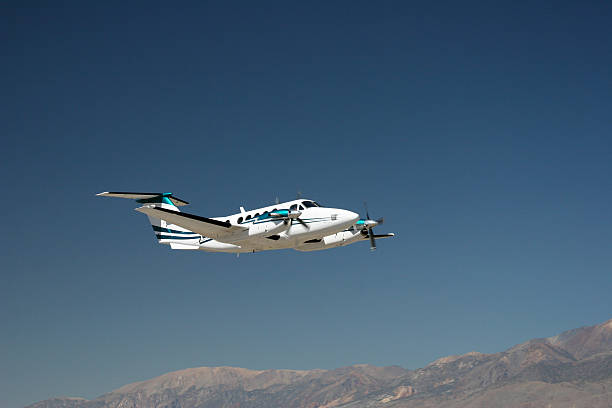The Critical Role of Temperature Control in Organ Transport Aircraft

When every second counts and human lives hang in the balance, the transportation of organs for transplantation represents one of medicine's most time-sensitive operations. Behind the scenes of every successful organ transplant lies a sophisticated network of logistics, technology, and precision engineering—with temperature control in organ transport aircraft serving as the cornerstone of this life-saving process.
The Life-or-Death Science of Organ Preservation
Organ transplantation has evolved from experimental procedures to routine medical interventions that save over 40,000 lives annually in the United States alone. According to the United Network for Organ Sharing (UNOS), approximately 17 people die daily while waiting for organ transplants, making efficient and effective organ transport systems absolutely critical.
The success of organ transplantation depends heavily on maintaining organ viability during transport, a process that begins the moment an organ is harvested and continues until it reaches the recipient. Temperature control emerges as the most critical factor in this equation, as even minor temperature fluctuations can render organs unsuitable for transplantation.
Understanding Organ Viability Windows
Different organs have varying tolerance levels for temperature changes and transport duration:
- Heart: 4-6 hours at 4°C (39.2°F)
- Liver: 12-24 hours at 4°C (39.2°F)
- Kidneys: 24-48 hours at 4°C (39.2°F)
- Lungs: 4-6 hours at 4°C (39.2°F)
- Pancreas: 12-24 hours at 4°C (39.2°F)
These narrow temperature ranges and time windows underscore why specialized aircraft equipped with advanced temperature control systems have become indispensable in modern organ transplantation.
The Evolution of Organ Transport Aircraft
The development of dedicated organ transport aircraft has revolutionized transplant medicine. Unlike commercial flights or ground transportation, these specialized aircraft offer controlled environments specifically designed to maintain optimal organ preservation conditions.
Key Features of Modern Organ Transport Aircraft
Advanced Climate Control Systems: Modern organ transport aircraft feature sophisticated HVAC systems capable of maintaining precise temperature ranges within ±0.5°C. These systems include redundant cooling units, backup power supplies, and real-time monitoring capabilities.
Specialized Storage Compartments: Aircraft are equipped with dedicated organ storage areas featuring individual temperature zones, allowing simultaneous transport of multiple organs with different preservation requirements.
Continuous Monitoring Technology: State-of-the-art sensors provide real-time data on temperature, humidity, and pressure conditions, with automated alerts for any deviations from optimal parameters.
Emergency Backup Systems: Multiple redundant systems ensure temperature control continuity even in the event of primary system failures, including battery-powered backup units and emergency cooling protocols.
Temperature Control: The Technical Foundation
The science behind temperature control in organ transport aircraft involves complex engineering principles designed to overcome the unique challenges of aviation environments.
Challenges of High-Altitude Transport
Aircraft operating at cruising altitudes face extreme external temperatures that can drop as low as -70°C (-94°F). This creates significant challenges for maintaining stable internal temperatures, particularly in cargo holds where organs are typically stored.
Pressure Differential Management: The pressure differential between cabin and external environments can affect cooling system efficiency. Advanced aircraft employ pressurized organ transport compartments to maintain optimal conditions.
Vibration and Turbulence Mitigation: Temperature control systems must operate reliably despite aircraft vibrations and turbulence, requiring robust mounting systems and shock-absorbing technologies.
Precision Cooling Technologies
Modern organ transport aircraft utilize various cooling technologies to maintain precise temperature control:
Thermoelectric Cooling: Peltier effect cooling systems provide precise temperature control without moving parts, reducing maintenance requirements and improving reliability.
Vapor Compression Refrigeration: Traditional refrigeration systems adapted for aviation use offer powerful cooling capacity for larger organ loads.
Liquid Nitrogen Systems: For ultra-low temperature requirements, liquid nitrogen systems provide backup cooling capabilities and extended preservation times.
Statistical Impact on Transplant Success Rates
The implementation of advanced temperature control systems in organ transport aircraft has demonstrably improved transplant outcomes. Research indicates that organs transported in temperature-controlled environments show:
- 95% success rate for kidney transplants when optimal temperature control is maintained
- 15% increase in organ viability for hearts transported in controlled environments
- 30% reduction in organ rejection rates when temperature protocols are strictly followed
- 40% improvement in one-year survival rates for liver transplant recipients
These statistics highlight the direct correlation between temperature control precision and patient outcomes, justifying the significant investment in specialized transport aircraft.
Regulatory Standards and Compliance
The operation of organ transport aircraft is subject to stringent regulatory oversight from multiple agencies, ensuring the highest standards of safety and efficacy.
Federal Aviation Administration (FAA) Requirements
The FAA maintains specific certification requirements for aircraft used in organ transport, including:
- Special airworthiness certificates for medical transport operations
- Regular inspections of temperature control systems
- Pilot certification for medical transport operations
- Maintenance protocols for life-support equipment
Health and Human Services (HHS) Guidelines
HHS, through agencies like UNOS, establishes medical standards for organ transport, including:
- Temperature monitoring protocols
- Documentation requirements for transport conditions
- Quality assurance measures for transport equipment
- Training requirements for transport personnel
Economic Considerations and Cost-Benefit Analysis
The investment in sophisticated temperature control systems for organ transport aircraft represents a significant financial commitment, but the economic benefits far outweigh the costs.
Cost Factors
Initial Equipment Investment: Advanced temperature control systems can cost between $500,000 to $2 million per aircraft, depending on complexity and redundancy requirements.
Maintenance and Operation: Annual maintenance costs for temperature control systems average $100,000 to $250,000 per aircraft.
Training and Certification: Personnel training and certification programs require additional investment in education and continuing education.
Economic Benefits
Reduced Organ Waste: Improved temperature control reduces organ waste by up to 25%, translating to millions of dollars in preserved medical resources.
Increased Transplant Success: Higher success rates reduce long-term healthcare costs and improve patient quality of life.
Enhanced System Efficiency: Reliable temperature control enables more efficient organ allocation and transport scheduling.
Future Innovations in Temperature Control Technology
The field of organ transport continues to evolve, with emerging technologies promising even greater precision and reliability in temperature control.
Artificial Intelligence Integration
AI-powered systems are being developed to predict and prevent temperature fluctuations by analyzing flight conditions, weather patterns, and system performance data. These predictive systems can automatically adjust cooling parameters to maintain optimal conditions throughout the transport process.
Nanotechnology Applications
Researchers are exploring nanotechnology solutions for more precise temperature control, including:
- Nano-enhanced cooling materials
- Microscopic temperature sensors
- Advanced thermal insulation systems
Sustainable Cooling Solutions
Environmental concerns are driving development of more sustainable cooling technologies, including:
- Solar-powered cooling systems
- Eco-friendly refrigerants
- Energy-efficient cooling designs
Global Impact and International Cooperation
The importance of temperature control in organ transport extends beyond national borders, with international organ sharing programs requiring standardized temperature control protocols.
Cross-Border Organ Transport
International organ transport faces additional challenges, including:
- Varying regulatory standards between countries
- Extended transport times requiring enhanced preservation
- Coordination between multiple aviation authorities
Humanitarian Applications
Temperature-controlled organ transport aircraft play crucial roles in disaster relief and humanitarian missions, providing life-saving capabilities in areas with limited medical infrastructure.
Training and Personnel Requirements
The operation of temperature-controlled organ transport aircraft requires specialized training for all personnel involved in the transport process.
Pilot Training Requirements
Pilots operating organ transport aircraft must complete specialized training covering:
- Medical transport protocols
- Temperature control system operation
- Emergency procedures for equipment failures
- Coordination with medical personnel
Medical Personnel Training
Medical personnel accompanying organ transports receive training in:
- Aircraft safety procedures
- Temperature monitoring protocols
- Emergency response procedures
- Equipment operation and troubleshooting
Quality Assurance and Continuous Improvement
Maintaining the highest standards of temperature control requires robust quality assurance programs and continuous improvement initiatives.
Performance Monitoring
Comprehensive monitoring systems track:
- Temperature control system performance
- Organ viability rates
- Transport success statistics
- Equipment reliability metrics
Continuous Improvement Programs
Regular analysis of transport data drives improvements in:
- System design and functionality
- Operating procedures
- Training programs
- Equipment maintenance protocols
Conclusion: The Future of Life-Saving Technology
Temperature control in organ transport aircraft represents a critical intersection of advanced engineering, medical science, and humanitarian purpose. As transplant medicine continues to advance and organ sharing networks expand globally, the importance of precise temperature control will only grow.
The investment in sophisticated temperature control systems has proven its value through improved transplant success rates, reduced organ waste, and ultimately, saved lives. With emerging technologies promising even greater precision and reliability, the future of organ transport looks brighter than ever.
The continued evolution of temperature control technology in organ transport aircraft exemplifies how engineering innovation can directly impact human health and survival. As we look toward the future, the ongoing development of these systems will undoubtedly play a crucial role in expanding access to life-saving organ transplants and improving outcomes for patients worldwide.
Every flight carrying organs represents hope for patients and families facing life-threatening conditions. The sophisticated temperature control systems aboard these aircraft serve as silent guardians, ensuring that this hope reaches its destination with the highest possible chance of success.
References
- United Network for Organ Sharing (UNOS) - Organ Transplant Statistics
- Federal Aviation Administration - Medical Transport Operations
- American Journal of Transplantation - Temperature Control in Organ Preservation
- International Society for Heart and Lung Transplantation Guidelines
- Aviation Week - Medical Transport Aircraft Technology















